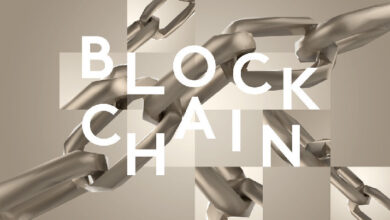As the Blockchain Industry Loses Billions Annually to MEV, the Solution Is Staring Us in the Face — Neo Founder Da Hongfei

Imagine the scene: You’re sitting at the card table, and every hand you’re dealt is terrible. But the cards never get better; the dealer has full sight of the deck and sets the order of the cards before they’re played. The dealer always wins.
The following opinion editorial was written by Da Hongfei, a prominent figure in the blockchain and cryptocurrency industry. He is the co-founder of Neo, a blockchain platform for building decentralized applications. He further solidified his role by founding and leading OnChain as its CEO.
This might sound like a purely hypothetical scenario. But this exact sequence of events plays out in the blockchain industry every day in the guise of a strategy employed by miners and validators, known as Maximal Extractable Value (MEV). MEV can take many forms but, fundamentally, the term refers to the process of including, reordering, or excluding transactions in blocks being mined for financial gain. In essence, the ability to preview transactions and reorder them is at the core of MEV.
While not all forms of MEV are necessarily harmful (and can sometimes even result in driving price parity across crypto exchanges), so-called “toxic MEV” intentionally exploits users and poses an existential threat to the blockchain industry. Toxic MEV also happens to be enormously profitable to those miners and validators who overstep their responsibilities and use their oversight to extract additional profit to the detriment of the wider community. While it’s difficult to pinpoint exactly how much has been lost to toxic MEV, recent figures suggest that more than $1B has been extracted from Ethereum alone, highlighting the tremendous scale of the problem.
Jumping the Queue
In a way, MEV represents the philosophical battle between centralization and decentralization that exists at the heart of the blockchain industry. It is common knowledge that on-chain transactions are publicly searchable and visible once they’re completed, but it’s less well-known that miners and validators can view these same transactions before they have been completed and inscribed to the block.
Therein lies the opportunity for manipulation: Miners and validators possess the authority and oversight to rearrange the order of these transactions in their favor, with the aim of securing additional profit beyond the standard rewards and gas fees for their work. And the fact that the number of users who transact on the blockchain radically outweighs the number of miners and validators that secure it can lead to a further issue in the form of centralization concerns.
Just as MEV is a problem that stems from the blockchain ecosystem, the very solution to counteract MEV persistence lies rooted in decentralized technology. By combining encrypted, so-called “enveloped” transactions with a unique consensus mechanism known as delegated Byzantine Fault Tolerance (dBFT), we can chart a way forward for the industry.
Enveloped Transactions
Enveloped transactions remain encrypted until they’re placed in a proposed block, concealing critical metadata to the largest extent. Miners don’t have access or sight of the information needed to reorder transactions in a block in their favor, which gives the added benefit of ensuring censorship at the protocol level. Through encryption, key information is hidden so malicious actors can’t read transactions until the transaction itself is executed, or until the block is created, essentially negating transaction reordering.
The key to “sealing” and “opening” enveloped transactions is threshold decryption, made possible through Distributed Key Generation (DKG) for secret key setup. Once transactions are included in a block and ordered, participating consensus nodes can then decrypt the transactions with the associated keys.
We can liken this inherently simple yet highly secure process to the transition from HTTP to HTTPS, which ensures the safe exchange of information on the web. In HTTP, transparent information sharing meant details could be intercepted and potentially altered, making both the information – and the receiver of this information – vulnerable. HTTPS, through encryption and verification, protects both the information and the user, providing the network infrastructure for fair and orderly transactions.
dBFT
The second weapon in the war against toxic MEV is an innovative blockchain consensus mechanism known as dBFT. Developed and pioneered by Neo, dBFT eradicates toxic MEV right from the beginning of the process, at the protocol level. In a nutshell, dBFT allows token holders to support a specific “bookkeeper” or “delegate” through a vote. The role is open to anyone who meets a simple set of requirements, and these bookkeepers use the Byzantine Fault Tolerance mechanism to reach a consensus and generate more blocks.
Under dBFT, consensus is only reached when two-thirds of the delegates agree to validate a transaction, adding it to a block. In the same vein, delegates can also see if block proposals are corrupt and opt to invalidate the block, eliminating the possibility for malicious behavior. The responsibility for validating the next block transaction is then passed to a new set of delegates. This requirement for block transactions to be verified by a majority of the delegates, while still preserving the ability of the network to reach consensus even when one or more of the delegates are corrupt, provides the ideal solution for global blockchain networks that must remain functional while combating bad actors.
Where to From Here?
We stand at a pivotal point in the blockchain revolution, where the wider world is finally starting to take note of what Web3 companies have been pushing for years. Our vision of a decentralized and transparent future is on the horizon, but we must overcome the inherent hurdles in order to finish the race to the finish line. Only through eliminating toxic MEV can DeFi become a truly level playing field, with everyday retail users on par with the major industry players, meaning a fairer and more decentralized industry.
Ensuring transparency and fairness while retaining security is paramount for the blockchain industry, and this can only be realized through utilizing the finest technologies for user protection. dBFT provides the ideal solution, providing a secure and decentralized mechanism whereby stakeholders can utilize their voting power to ensure maximum benefit for the community at large. In tandem with enveloped transactions, dBFT consensus will encourage safe community participation and peer engagement, ensuring that widespread community involvement will continue to drive this industry forward.
What do you think about Da Hongfei’s MEV solution? Share your thoughts and opinions about this subject in the comments section below.





